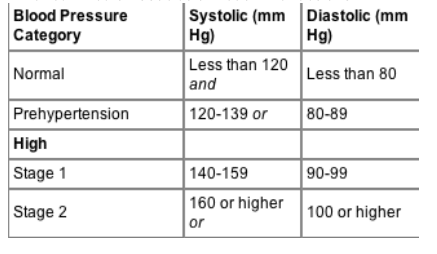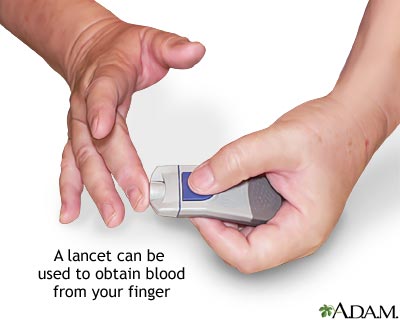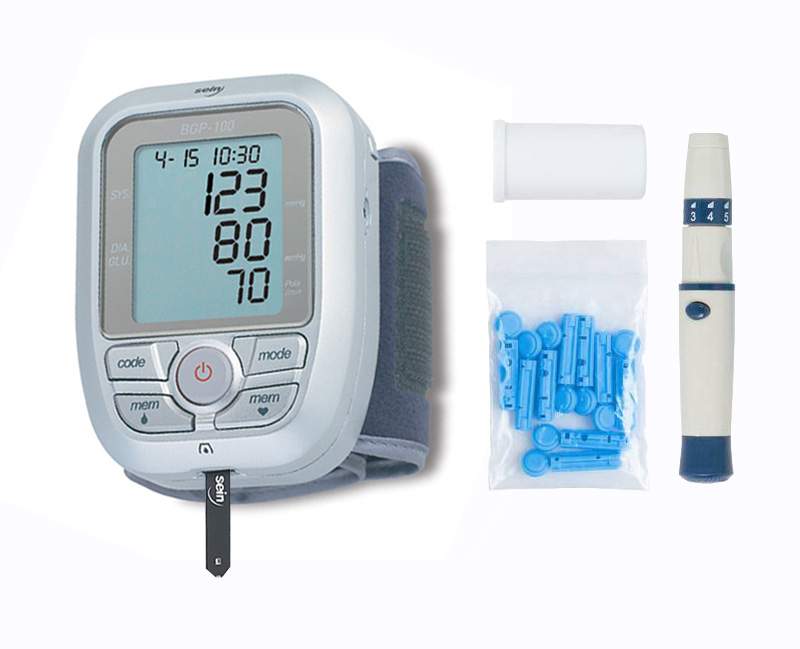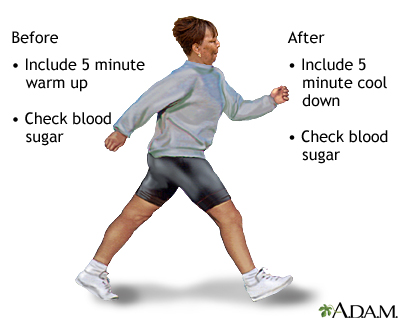BIOMEDICAL PROJECTS IDEAS 1
Posted by Unknown | Posted on 1:41 AM
0
IMPROVE YOUR VOCABULARY USING BARRON'S
BEST BOOK FOR PLACEMENTS AND GRE
http://www.ziddu.com/download/1510517/Barron_Gre_12th_Edition.pdf.html
LASERS IN ENT
Lasik eye surgery is a procedure that is designed to correct poor vision. It is relatively painless and takes place in a simple office setting. This technology is unique has reduced the need for millions of people to use glasses or contact lenses. In most cases, people are able to discontinue their use all together and go about living a life with perfect vision.
LASIK is a surgical procedure intended to reduce a person’s dependency on glasses or contact lenses. LASIK stands for Laser-Assisted In Situ Keratomileusis and is a procedure that permanently changes the shape of the cornea, the clear covering of the front of the eye, using an excimer laser. A knife, called a microkeratome, is used to cut a flap in the cornea. A hinge is left at one end of this flap. The flap is folded back revealing the stroma, the middlesection of the cornea. Pulses from a computer-controlled laser vaporize a portion of the stroma and the flap is replaced.
Type of Lasers
The lasers that are used in Lasik eye surgery are truly unique and use exceptional technology. Excimer lasers were created specifically for Lasik. The FDA has approved each type of laser, but some lasers are better than others. The biggest difference is the way that the beam is delivered to the eye and their ability to track eye movement.
There are two broad categories of laser including broad beam and scanning. There are two categories within scanning lasers including slit scanning and spot scanning.
Broad Beam Lasers
Broad beam lasers utilize a large beam diameter, ranging from 6 to 8 millimeters, that cut the cornea. The use of these lasers shortens the amount of time that is necessary to complete the surgery. These lasers also reduce the risk of over correction due to pupil movement. The larger diameter makes the likelihood of complications more likely, but improved technique has eliminated most of this risk.
Slit Scanning Lasers
Slit scanning lasers use smaller beams. The beam is linked to a rotational device that has slit holes to enlarge the area that is being cut. Slit scanning lasers provide a more uniform beam and create a smoother cut. There is a slightly greater chance of over correction with these lasers.
Spot Scanning Lasers
Spot scanning lasers are referred to as “flying spot” lasers. These use a small beam of 0.8 to 2 millimeters. The beam is scanned across the cornea in order to create the area to be cut. Spot scanning lasers have potential to create the smoothes cut. They are also able to produce customized cuts and are able to treat irregular astigmatism.
Most lasers contain an eye tracking system. This system is linked to the position of the eye. Lasers without this system make it necessary for the patient to fixate on a distant object and to keep their eyes still. There are two different type of eye-tracking systems:
• Open Loop – monitors the pupil’s location.
• B – Tracks eye movement and makes adjustments accordingly
Some sort of tracking system is required as it can be difficult for patient’s to fixate on an object for a long period of time.
IntraLase Lasers
The IntraLase is capable of creating the flap that needs to be cut in order to reach the cornea for shaping. The laser creates a precise pattern of small, overlapping spaces. These work at a very high speed. This allows the tissue to be target and divided at a molecular level. This laser also uses a special software that helps to guide the beam. The software instructs the beam to apply a series of bubbles on the cornea. This results in a corneal flap. The technology has helped patients with thin corneas utilize Lasik.
IntraLase has far fewer complications than when microkeratomes are used. Surgeons have noticed that there is one possible complication. Some patients have a postoperative complication of being very sensitive to light after undergoing an all laser Lasik procedure. Many surgeons have also noted that this complication is only temporary and that using steroid eye drops has rectified the problem after a couple of weeks.
This system is more expensive as well. The “all laser” approach can add an additional $300 per eye. Patients are often given the option between mircrokeratome or the IntraLase system. Some surgeons use IntraLase exclusively, so the cost is already included in their fee.
Long-Term Effects
Approximately 94% of patients have improved vision immediately after the surgery is performed. Many patients will have 20/40 vision or better after receiving Lasik surgery. There are some complications that have been reported such as:
• Seeing halos around lights at nighttime
• Worsened vision
• Infections
• Poor night vision
Used for
Improved vision is not the only reason that many people turn to Lasik. There are several eye conditions that Lasik can help to correct. It has been very popular for treating conditions such as:
• Glaucoma
• Macular degeneration
• Diabetic retinopathy
• Presbyopia
• Astigmatism
• Myopia
• Hyperopia
THIS TOOL IS USED TO CONVERT ALL THE DOCX FILE DIRECTLY TO .DOC FORMAT SO THAT IT CAN BE OPENED IN LOWER VERSIONS OF OFFICE
DOWNLOAD NOW
http://www.ziddu.com/download/7577834/convertdocxtodoc.exe.html
THIS TOOL IS USED TO CONVERT ALL THE PDF DOCUMENTS TO THE .DOC FORMAT SO THAT THEY CAN BE EDITED AND USED FOR PERSONAL USE
GREAT SOFTWARE
KEYGEN HAS ALSO BEEN INCLUDED
FULL VERSION OF PDF 2 WORD SOFTWARE
DOWNLOAD NOW
http://www.ziddu.com/download/7578236/Pdf2Word.v2.0.Incl.Keygen.rar.html
THESE ARE THE REVISION NOTES ON BIOMECHANICS WHICH INCLUDE BASIC INFORMATION ABOUT THE BIOMECHANICS
ENJOY THESE NOTES AND PREPARE WELL FOR THE EXAMS
http://www.ziddu.com/download/7574399/IntroductiontoBiomechanics.pdf.html
AP chapter of IYCN welcomes all the youth(18-30 y rs)with a minimum qualification of graduation to participate in Hyderabad Base camp. As a part of base camp they are organizing Climate Leadership program which focuses on basic training on the science behind Climate change, the negotiations, politics, solutions and the ways we can take action locally and individually. This would be followed by trainings in media, direct action and more. All the participants can bag prize money up to Rs. 30000 by sending their views in the form of ppts,slogans,videos,films or any through media on environment and climate change through mail to above mail address on or before 10th December 2009.
To avail this opportunity all you have to do is drop a mail to MR.Ranga Prasad(Regional coordinator)at above mail address or contact him at 9581000350 before 10th of December 2009 and by paying Rs.150 at the venue on 14th December 2009. So hurry and grab this opportunity before its late.
ELIGIBILITY-All the youth , 18-30 y rs with a minimum qualification of graduation
Last date to apply: December 10, 2009
WEBSITE-http://www.iycn.in/
I GUARANTEE YOU THAT IF YOU CAN READ THIS DOCUMENT GIVEN BELOW
JUST THIS DOCUMENT
YOU WILL NOT GET A SUPPLIMENTARY IN M.D.U ROHTAK
THIS DOCUMENT CONTAINS THE SUMMARY OF WHOLE DIGITAL IMAGE PROCESSING
IT IS ONE OF THE BEST DOCUMENT TO READ ABOUT DIGITAL IMAGE PROCESSING.
http://www.ziddu.com/download/7571321/DigitalImageProcessingimpdmos.pdf.html
IMAGE PROCESSING TOOLBOX-
http://www.ziddu.com/download/7571349/Image_Processing_Toolbox.doc.html
IMAGE SEGMAENTATION
http://www.ziddu.com/download/7571367/IMAGESEGMENTATION.PDF.html
IMAGE RESTORATION
http://www.ziddu.com/download/7571368/IMAGERESTORATION.PDF.html
IMAGE REGISTRATION
http://www.ziddu.com/download/7571392/IMAGEREGISTRATION.PDF.htmlhttp://www.ziddu.com/download/7571366/IMAGEREGISTRATION2.PDF.html
PROCESSING THE RADIOGRAPH
BEST NOTES ON THIS TOPIC ARE IN THIS DOCUMENT
http://www.ziddu.com/download/7571353/PROCESSINGTHERADIOGRAPH.PDF.html
IMAGE PROCESSING TOOLBOX
http://www.ziddu.com/download/7571399/imageprocessingtoolbox.doc.html
LAST BUT NOT THE LEAST
TEXTBOOK OF DIGITAL IMAGE PROCESSING
BY GONZALEZ WOODS 2ND EDITION
http://www.ziddu.com/download/7571443/DIGITALIMAGEPROCESSING2NDEDITIONBYGONZALEZWOODS.rar.html
THIS IS THE FIRST PART OF THE SERIES OF NOTES ON DIGITAL IMAGE PROCESSING
THIS SERIES INCLUDES THOSE TOPICS WHICH ARE RARELY FOUND DIRECTLY ON NET ALSO
DOWNLOAD IT
http://www.ziddu.com/download/7571230/THEORYANDAPPLICATIONOFDIGITALIMAGEPROCESSING.PDF.html
COMMUNICATION SYSTEMS SYLLABUS
http://www.ziddu.com/download/7571064/COMMUNICATIONSYSTEMS.PDF.html
MEDICAL INFORMATICS SYLLABUS
http://www.ziddu.com/download/7571073/MEDICALINFORMATICS.PDF.html
MICROCONTROLLER AND ITS APPLICATIONS SYLLABUS
http://www.ziddu.com/download/7571068/MICROCONTROLLERANDITSAPPLICATION.PDF.html
INTRODUCTION TO BIOMATERIALS SYLLABUS
http://www.ziddu.com/download/7571072/INTRODUCTIONTOBIOMATERIALS.PDF.html
BIOMEDICAL EQUIPMENTS 2 SYLLABUS
http://www.ziddu.com/download/7571071/BIOMEDICALEQUIPMENTS2.PDF.html
PRINCIPLES OF MEDICAL IMAGING SYLLABUS
http://www.ziddu.com/download/7571119/PRINCIPLESOFMEDICALIMAGING.PDF.html
BASIC CLINICAL SCIENCES-SYLLABUS
http://www.ziddu.com/download/7571069/BASICCLINICALSCIENCES.PDF.html
BIO-MECHANICS SYLLABUS
http://www.ziddu.com/download/7570086/BIOMECHANICS.PDF.html
MICROPROCESSOR & INTERFACING SYLLABUS
http://www.ziddu.com/download/7571070/MICROPROCESSORINTERFACING.PDF.html
INTEGRATED CIRCUIT SYSTEMS SYLLABUS
http://www.ziddu.com/download/7571066/INTEGRATEDCIRCUITSYSTEMS.PDF.html
BIOMEDICAL EQUIPMENTS-1 SYLLABUS
http://www.ziddu.com/download/7571065/BIOMEDICALEQUIPMENTS.PDF.html
DIGITAL IMAGE PROCESSING SYLLABUS
http://www.ziddu.com/download/7571067/DIGITALIMAGEPROCESSING.PDF.html
THE BEST MICROCONTROLLER BOOK FOR PROGRAMMING IN ALL TIME
TEACHER'S FAVOURITE ONE
DON'T YOU WANNA HAVE IT
LEARN THE PROGRAMMING AND HONE UR EMBEDDED SKILLS
http://www.ziddu.com/download/7567766/trollerandEmbeddedSystemsUsingAssemblyandClanguage.pdf.html
http://www.ziddu.com/download/1664801/The8051MicrocontrollerandEmbeddedSystemsCH1.pdf.html
http://www.ziddu.com/download/1664653/The8051MicrocontrollerandEmbeddedSystemsCH2.pdf.html
http://ziddu.com/download/1664652/The8051MicrocontrollerandEmbeddedSystemsCH3.pdf.html
http://www.ziddu.com/download/1664650/The8051MicrocontrollerandEmbeddedSystemsCH4.pdf.html
http://www.ziddu.com/download/1664651/The8051MicrocontrollerandEmbeddedSystems.pdf.html
The Holter monitor
The Holter monitor records the heart's electrical activity through electrodes placed on the chest. The electrical impulses are then transmitted to an amplifier, which records them on a small magnetic tape or digital recorder for later review by a physician. This test provides the doctor with important information about patient's heart and its rhythm and can help identify the cause of such symptoms as chest pain, palpitations or dizziness.

The Working of Holter monitor
An ambulatory electrocardiogram is a portable recording of the heart rhythm taken during patient's normal activities. It is entirely painless and none of the equipment enters his/her body. It monitors his/her heart's electrical activity as detected on the surface of the skin, transmits this signal to an amplifier, and saves a record of the electrocardiogram on a small magnetic tape or digital recorder for subsequent review and analysis. Following completion of the monitoring period, the tape is scanned by a technician.

Ambulatory electrocardiograph has been available since the early 1950s, when Dr. Holter introduced his portable electrocardiogram to the medical community. Since that time, these devices have decreased in size and weight, but have increased in sophistication.
(DR. NORMAN J.HOLTER)
The first devices had to be worn in a backpack, and despite their large size and weight, could only review the heart along one axis (one direction).
(CASSETTE HOLTER RECORDER)
Modern devices can look at the heart along several different axes, and their weight and size are such that they do not interfere with your normal activities.

(MODERN FLASH CARD HOLTER RECORDER)
Information obtained by the Holter monitor
When applied to the patient's chest, the Holter monitor can identify any abnormal heart rhythms or rate. It picks up skipped heartbeats, as well as those that are excessively fast or slow. Under some circumstances, the test can identify whether the heart has a sufficient supply of blood and so help your physician determine if there are blockages or constrictions in the coronary arteries (the blood vessels that supply blood to the heart). Thus, if patient has had chest pain, or episodes of fainting or dizziness, this test will show what happens to his/her heart while he/she has these symptoms. If patient is taking medication for a heart condition, the test helps evaluate how well it is working. If he/she is using a temporary or permanent pacemaker (a device that helps to regulate the heart rhythm), the Holter monitor can detect whether it is working properly.

How the test is done
First, the technician shaves the hair off the areas where the electrodes (sticky patches that detect the heart's electrical signals) are to be placed. After shaving, the skin is cleaned with a fat degreaser to remove any oil from the skin so the electrodes will have better contact and not fall off during the test. Next, an antiperspirant is wiped over the shaved area to prevent perspiration from loosening the electrodes. Finally, the electrodes are applied to patient's chest.

The number of wires and electrodes applied depends upon the number of "leads" (the angle from which the heart is viewed), the physician feels should be monitored. Often this may require as many as five or six electrode patches with their accompanying wires. Each electrode and wire unit is placed in a specific place on the chest. It is important that the electrodes remain stable once attached. After they are securely fixed to patient chest, the excess wire is taped to the skin to prevent their accidental disconnection. Next, the technician checks the system to be sure that it is working properly. The monitor is connected to an electrocardiogram recorder to determine if the ambulatory electrocardiogram provides a high quality tracing free of excessive "noise" or electrical interference. The patient may be asked to move around, to sit, stand, lie down, bend, and breathe deeply, to provide a baseline reading of the heartbeat and to assure that simple movement does not interfere with the recording.
The cassette tape or digital recorder is then tested and a battery inserted into the device. The patient can wear the tape recorder either on your belt or over his/her shoulder, depending on the model used.
The diary card
The last and most important part of the test is the diary card, the patient will be asked to fill out. On this card the patient record his/her activities and symptoms during the day of monitoring. This is an extremely important part of the test since it enables the technician to correlate patient's heart electrical activity with his/her symptoms and activities. If the patient do not write anything in the diary, it may be impossible for doctor to determine the cause of any abnormalities and the test may have to be repeated. The information needed on the diary card includes the day, time, type of activity performed (running, walking, grocery shopping, etc.), and any symptoms you experience. Be certain to fill the diary out correctly and carefully. The test generally lasts from 24 to 48 hours, depending on the period of time specified by doctor.
Follow-up

After completion of the test, the patient will be asked to return to the laboratory for removal of the device. At this point, only half the test is completed. The last half of the test consists of an analysis by a technician of the 24-48 hours of tracings via a rapid scanning device.

Subsequently, the technician records any abnormal segments of the tracing, or those during which patient recorded symptoms in his/her diary. The technician's report and the pertinent printouts of the electrocardiogram are then sent to the physician.

Ambulatory blood pressure monitoring (ABPM) measures blood pressure at regular intervals throughout the day and night. It is believed to be able to reduce the white coat hypertension effect.
BLOOD PRESSURE & HYPERTENSION

Blood pressure is the force that pushes blood through the blood vessels in your body. In people who have high blood pressure, blood is pushed through the blood vessels with greater force than normal. Another word for high blood pressure is "hypertension."

CAUSES OF HIGH BLOOD PRESSURE
1.)A diet high in fat and cholesterol
2.)Not exercising regularly or not exercising hard enough
3.)Being overweight
4.)A family history of high blood pressure
5.)Tobacco use
6.)Stress
7.)Some birth control medicines
8.)Kidney and hormone problems
SYSTOLE & DIASTOLE

Blood pressure is recorded as two numbers separated by a slash, like 120/80. The first number is the systolic (say: "sis-tol-ik") pressure; it is the force when the heart pumps. The second number is the diastolic (say: "die-uh-stol-ik") pressure; it is the force when the heart relaxes between beats.

SYSTOLIC & DIASTOLIC READINGS
Knowing both of your blood pressure readings can help your doctor tell if you have high blood pressure. Your doctor will want you to keep your usual blood pressure lower than 140/90. If you have diabetes, your doctor will want you to keep your blood pressure lower than 130/85.

EFFECTS OF HIGH BP ON BODY PARTS
High blood pressure can damage many parts of the body. If patient has high blood pressure, he/she has a higher risk for stroke, heart disease, heart attacks and kidney failure. Control of the blood pressure can reduce these risks.




ASSESSMENT & DIAGNOSIS OF HYPERTENSIVE PATIENTS

(CLICK IMAGE TO ENLARGE)
AMBULATORY BP MONITOR

It is a small machine, about the size of a portable radio. The Patient will wear it on a belt. The blood pressure cuff on the monitor can be worn under his/her clothes without anyone seeing it. The picture to thebelow shows a person wearing an ambulatory blood pressure monitor.

This machine lets doctor find out what patient's blood pressure was every 15 to 30 minutes of a normal day.The information collected by this machine can help patient and doctor see if the blood pressure treatment is working.
The doctor may want patient to use an ambulatory blood pressure monitor for one or more of the following reasons:
1.)If patient has "borderline" high blood pressure
2.)If patient and doctor can't keep your blood pressure under control
3.)If patient has blood pressure problems caused by other medicines
4.)If patient is pregnant and has high blood pressure
5.)If patient has fainting spells
The monitor may help doctor find out if patient is a person who only has high blood pressure when you are at the doctor's office. This is called "white-coat hypertension." If patient has this kind of hypertension, he/she may not need to take medicine.
WORK OF AMBULATORY BP MONITOR ON PATIENT
The small blood pressure cuff that is connected to the monitor will automatically check patient's blood pressure about every 30 minutes, even while he/she is sleeping. The patient also will be asked to keep a diary of his/her day's activities, so doctor will know when he/she was active and when she/she was resting. Some people feel a little sore from the frequent pressure checks. Some people get a rash, but it usually goes away without treatment.
After 24 hours of monitoring, patient will take the machine and diary to the doctor's office. The blood pressure information is transferred from the monitor to a computer or an analyzer. The computer helps the doctor make sense of the information. Your doctor will review the information with you and decide if your treatment program is working or if you need to make changes to it.


ADVICE FOR HIGH BP PATIENTS






Blood glucose monitoring is a way of testing how much glucose is in the blood (glycemia).

i.)This is important in the care of diabetes mellitus. Most people with Type 2 diabetes need to test at least once per day (usually before breakfast) to assess the effectiveness of their diet and exercise for controlling their blood glucose levels. Many people with Type 2 are using an oral medication to combat their insulin resistance, and must test their blood glucose before and after breakfast to assess the effectiveness of their dosage.

ii.)All people who need to inject insulin, both for Type 1 diabetes and Type 2, need also to test their blood sugar more often (3 to 10 times per day) to assess the effectiveness of their prior insulin dose and to calculate their next insulin dose.
DIABETES MELLITUS TYPE 1

Diabetes mellitus type 1 (Type 1 diabetes, Type I diabetes, T1D, IDDM) is a form of diabetes mellitus. Type 1 diabetes is an autoimmune disease that results in the permanent destruction of insulin producing beta cells of the pancreas.

Type 1 is lethal unless treatment with exogenous insulin via injections replaces the missing hormone.

DIABETES MELLITUS TYPE 2
Diabetes mellitus type 2 (formerly called diabetes mellitus type II, non insulin-dependent diabetes (NIDDM), obesity related diabetes, or adult-onset diabetes) is a metabolic disorder that is primarily characterized by insulin resistance, relative insulin deficiency, and hyperglycemia.

It is often managed by engaging in exercise and modifying one's diet.
It is rapidly increasing in the developed world, and there is some evidence that this pattern will be followed in much of the rest of the world in coming years.
Improved technology for measuring blood glucose is rapidly changing the standards of care for all diabetic people. There are several methods of blood glucose testing currently available.
CHEMICAL TEST STRIPS
Chemical test strips are a low cost method for monitoring blood glucose. A fairly large drop of blood, usually taken from the fingertip, is placed on a chemically prepared strip, called a blood glucose testing strip.The strip chemistry will cause it to change color according to the amount of glucose is in the blood.

One can tell if their level of blood glucose is low, high, or normal by comparing the color on the end of the strip to a color chart that is printed on the side of the test strip container.


These are recommended only for people who are occasionally monitoring their blood glucose level (prediabetic or type 2) and are not using insulin.
The Betachek Diabetes Test Strips
BLOOD GLUCOSE METERS

A blood glucose meter is an electronic device for measuring the blood glucose level. A relatively small drop of blood is placed on a disposable test strip which interfaces with a digital meter. Within several seconds, the level of blood glucose will be shown on the digital display.



While more expensive, blood glucose meters seem a breakthrough in diabetes self care. As the drops of blood needed for the meter become smaller, the pain associated with testing is reduced and the compliance of diabetic people to their testing regimens is improved. Although the cost of using blood glucose meters seems high, it is believed to be a cost benefit relative to the avoided medical costs of the complications of diabetes.
A recent and welcome advance is the use of small blood drops for blood glucose testing from other places than the finger tips.
This alternate site testing uses the same test strips and meter, is practically pain free, and gives the real estate on the finger tips a needed break if they become sore.
(ALTERNATE SITE GLUCOSE TEST- BLOOD TAKEN FROM FOREARM INSTEAD OF FINGER)
CONTINUOUS BLOOD GLUCOSE MONITORING (AMBULATORY)
A continuous blood glucose monitor determines blood glucose levels on a continuous basis (every few minutes). A typical system consists of:
i.)a disposable glucose sensor placed just under the skin, which is worn for a few days until replacement,

(A-INSULIN PUMP, B-CANNULA, C-TINY GLUCOSE SENSOR, D-REAL TIME TRANSMITTER)
ii.)a link from the sensor to a non-implanted transmitter which communicates to a radio receiver,
iii.)an electronic receiver worn like a pager (or insulin pump) that displays blood glucose levels on a practically continuous manner, as well as monitors rising and falling trends in glycemic excursions.


Continuous blood glucose monitors measure the glucose level of interstitial fluid. Disadvantages compared to traditional blood glucose monitoring are:
i.)continuous systems must be calibrated with a traditional blood glucose measurement (using current technology) and therefore do not yet fully replace "fingerstick" measurements.
ii.)glucose levels in interstitial fluid lag temporally behind behind blood glucose values.
Patients therefore require traditional fingerstick measurements for calibration (typically twice per day) and are often advised to use fingerstick measurements to confirm hypo- or hyperglycemia before taking corrective action.
The lag time discussed above has been reported to be about 5 minutes.Anecdotally, some users of the various systems report lag times of up to 10-15 minutes. This lag time is insignificant when blood sugar levels are relatively consistent. However, blood sugar levels, when changing rapidly, may read in the normal range on a CGM system while in reality the patient is already experiencing symptoms of an out-of-range blood glucose value and may require treatment. Patients using CGM are therefore advised to consider both the absolute value of the blood glucose level given by the system as well as any trend in the blood glucose levels. For example, a patient using CGM with a blood glucose of 100 mg/dl on their CGM system might take no action if their blood glucose has been consistent for several readings, while a patient with the same blood glucose level but whose blood glucose has been dropping steeply in a short period of time might be advised to perform a fingerstick test to check for hypoglycemia.
Continuous monitoring allows examination of how the blood glucose level reacts to insulin, exercise, food, and other factors. The additional data can be useful for setting correct insulin dosing ratios for food intake and correction of hyperglycemia. Monitoring during periods when blood glucose levels are not typically checked (e.g. overnight) can help to identify problems in insulin dosing (such as basal levels for insulin pump users or long-acting insulin levels for patients taking injections). Monitors may also be equipped with alarms to alert patients of hyperglycemia or hypoglycemia so that a patient can take corrective action(s) (after fingerstick testing, if necessary) even in cases where they do not feel symptoms of either condition. While the technology has its limitations, studies have demonstrated that patients with continuous sensors experience less hyperglycemia and also reduce their glycated hemoglobin levels.
Currently, continuous blood glucose monitoring is not automatically covered by health insurance in the United States in the same way that most other diabetic supplies are covered (e.g. standard glucose testing supplies, insulin, and even insulin pumps). However, an increasing number of insurance companies do cover continuous glucose monitoring supplies (both the receiver and disposable sensors) on a case-by-case basis if the patient and doctor show a specific need. The lack of insurance coverage is exacerbated by the fact that disposable sensors must be frequently replaced (sensors by Dexcom and Minimed have been FDA approved for 7- and 3-day use, respectively, though some patients wear sensors for longer than the recommended period) and the receiving meters likewise have finite lifetimes (less than 2 years and as little as 6 months). This is one factor in the slow uptake in the use of sensors that have been marketed in the United States.
Some current and future continuous glucose monitoring products include:
i.)The Freestyle Navigator
ii.)Minimed Paradigm insulin pump plus a continuous sensor
iii.)The Guardian by Minimed
iv.)Dexcom STS
v.)GlucoDay S
See this summary by a diabetes support group for a review of CBGM products, performance, and features.
This technology is an important component in the effort to develop a closed-loop system connecting real-time automatic control of an insulin pump based on immediate blood glucose data from the sensor. One important goal is to develop an algorithm for automatic control, by which the system would function as an artificial pancreas. Although sensor reliability is more than adequate to improve outcomes for patients when used in an "open-loop" setting where the patient makes judgments about delivery of insulin, it is clearly not ready to be used as part of a closed loop system. FDA had approved the technology for use only in combination with fingerstick testing, and patients are expected to make judgments about treatment only after taking a fingerstick test. Therefore it is overly optimistic to think that these devices will be part of a closed loop system in the near future.
GLUCOSE SENSING BIOIMPLANTS
Longer term solutions to continuous monitoring, not yet available but under development, use a long-lasting bio-implant. These systems promise to ease the burden of blood glucose monitoring for their users, but at the trade off of a minor surgical implantation of the sensor that lasts from one year to more than five years depending on the product selected.
Products under development include:
i.)The SMSI Glucose Sensor
ii.)The Animas Glucose Sensor
iii.)Implanted Glucose Bio-sensor
iv.)The Dexcom LTS (long term system)
NON INVASIVE BLOOD GLUCOSE MONITORING TECHNOLOGY
Some new technologies to monitor blood glucose levels will not require access to blood to read the glucose level. Non-invasive technologies include near IR detection, ultrasound and dielectric spectroscopy. These will free the person with diabetes from finger sticks to supply the drop of blood for blood glucose analysis.

Most of the non-invasive methods under development are continuous glucose monitoring methods and offer the advantage of providing additional information to the subject between the conventional finger stick, blood glucose measurements and over time periods where no finger stick measurements are available (i.e. while the subject is sleeping).

Products under development include:
i.)Fovioptics retinal glucose analyzer
ii.)Inlight Solutions, NIR glucose sensor
iii.)NIR Diagnostics, NIR glucose sensor
iv.)Sinsys Medical GTS
v.)Solianis Monitoring AG
VARIOUS MODELS OF MODERN GLUCOMETER



(COMBINED DIGITAL BP MONITOR & GLUCOMETER")
SYMPTOMS,TESTS & ADVICE FOR DIABETIC PATIENTS
HYPERGLYCEMIA(HIGH BLOOD GLUCOSE) & HYPOGLYCEMIA (LOW BLOOD GLUCOSE) SYMPTOMS
(HYPERGLYCEMIA)


This method of treating low blood sugars is called the 15:15 rule. Eat 15 grams of carbohydrate and wait 15 minutes
3.)Fasting plasma glucose test -- this is the simplest and fastest way to measure blood glucose and diagnose diabetes. Fasting means that you have had nothing to eat or drink (except water) for 8 to 12 hours before the test. You are diagnosed with diabetes if your blood glucose level is 126 mg/dl or greater on two separate tests.
4.)Oral glucose tolerance test -- your blood glucose is tested two hours after drinking 75 grams of glucose. You are diagnosed with diabetes if your blood glucose level is 200 mg/dl or greater.

5.)A person with type 2 diabetes can use exercise to help control their blood sugar levels and provide energy their muscles need to function throughout the day. By maintaining a healthy diet and sufficient exercise, a person with type 2 diabetes may be able to keep their blood sugar in the normal non-diabetic range without medication.

(BEFORE & AFTER EXERCISES)
6.)RISKS OF DIABETES


© All Rights Reserved. KUSH TRIPATHI
Theme by : PHP Web Hosting | Converted into Blogger Templates by Theme Craft | Falcon Hive
